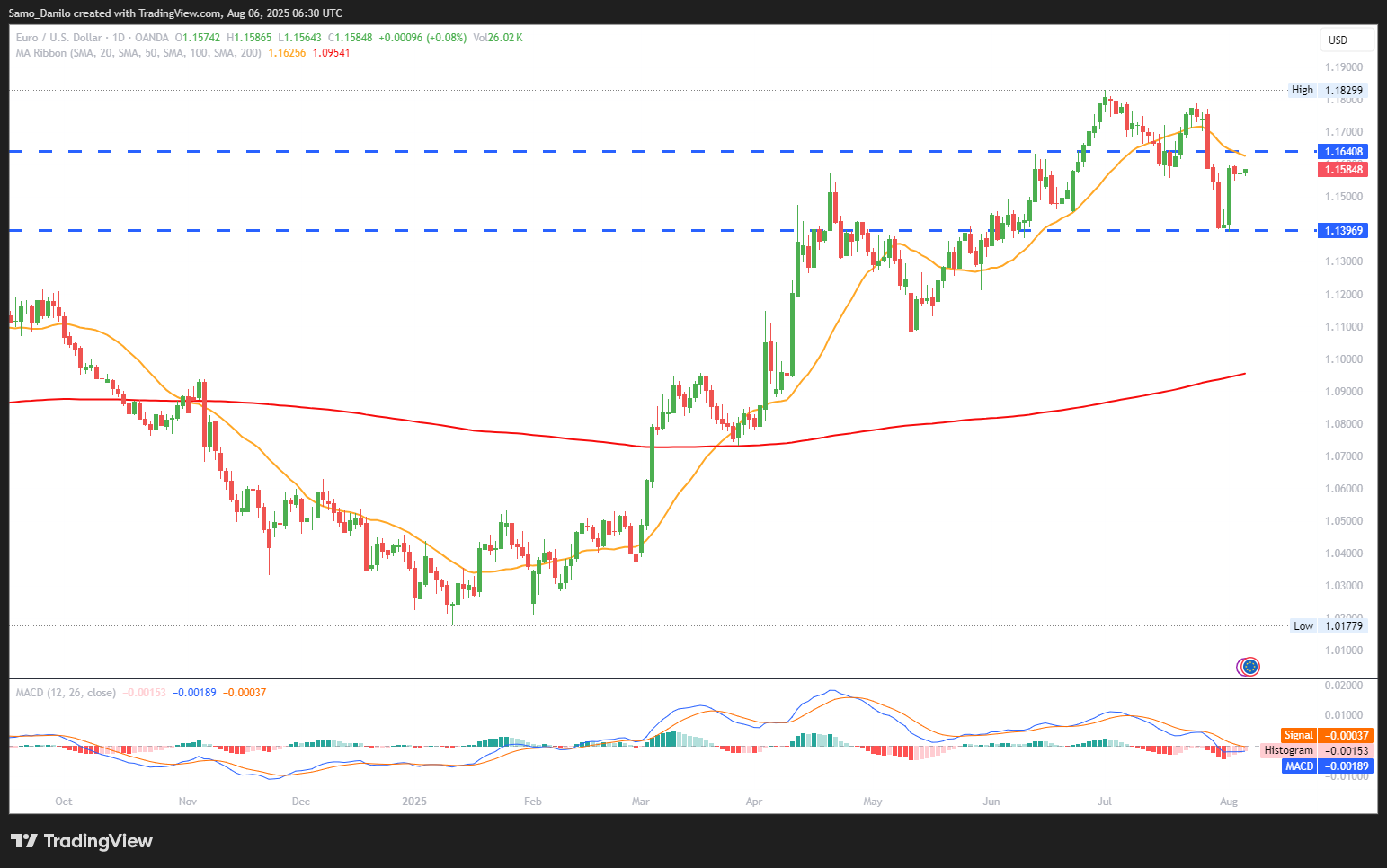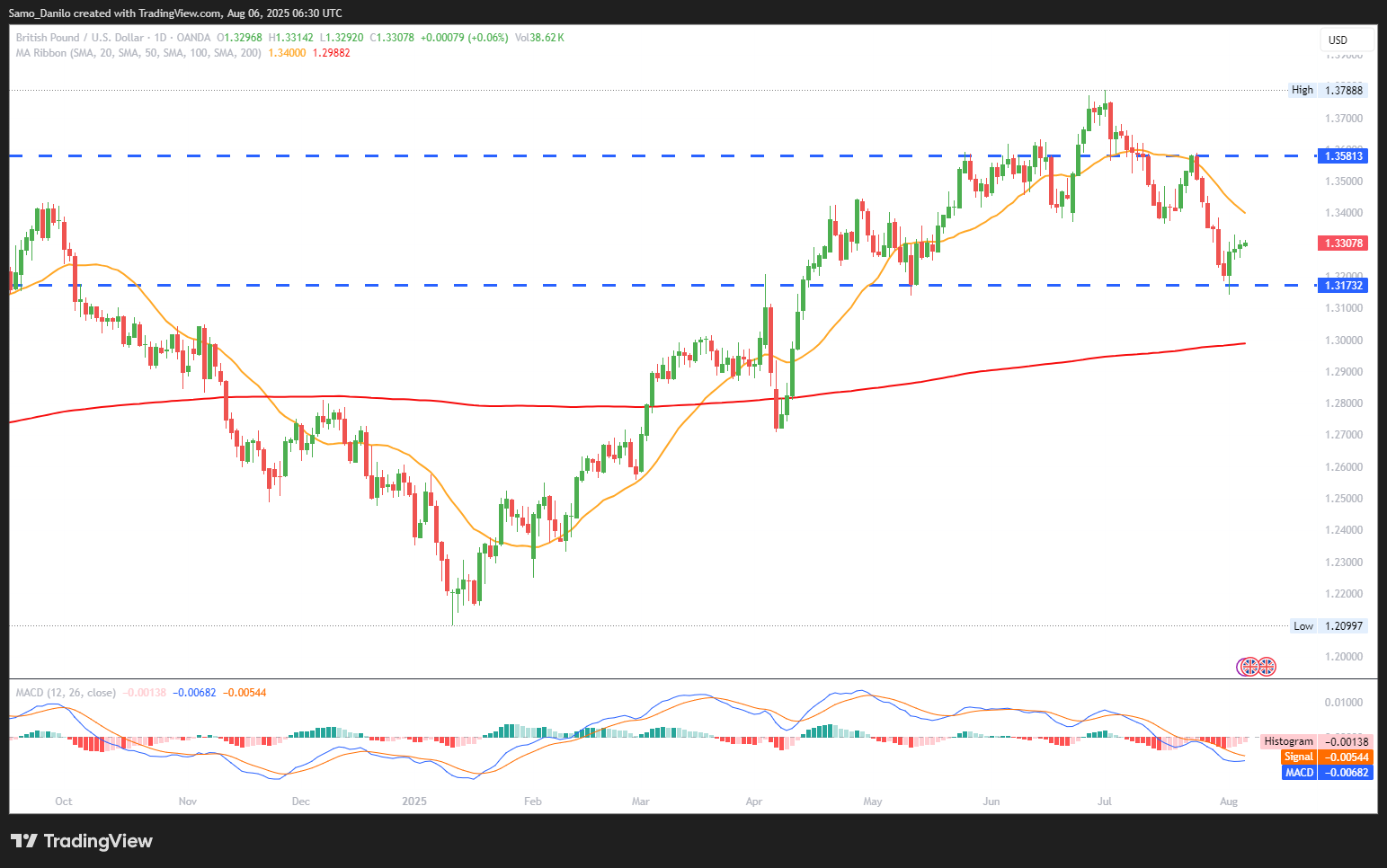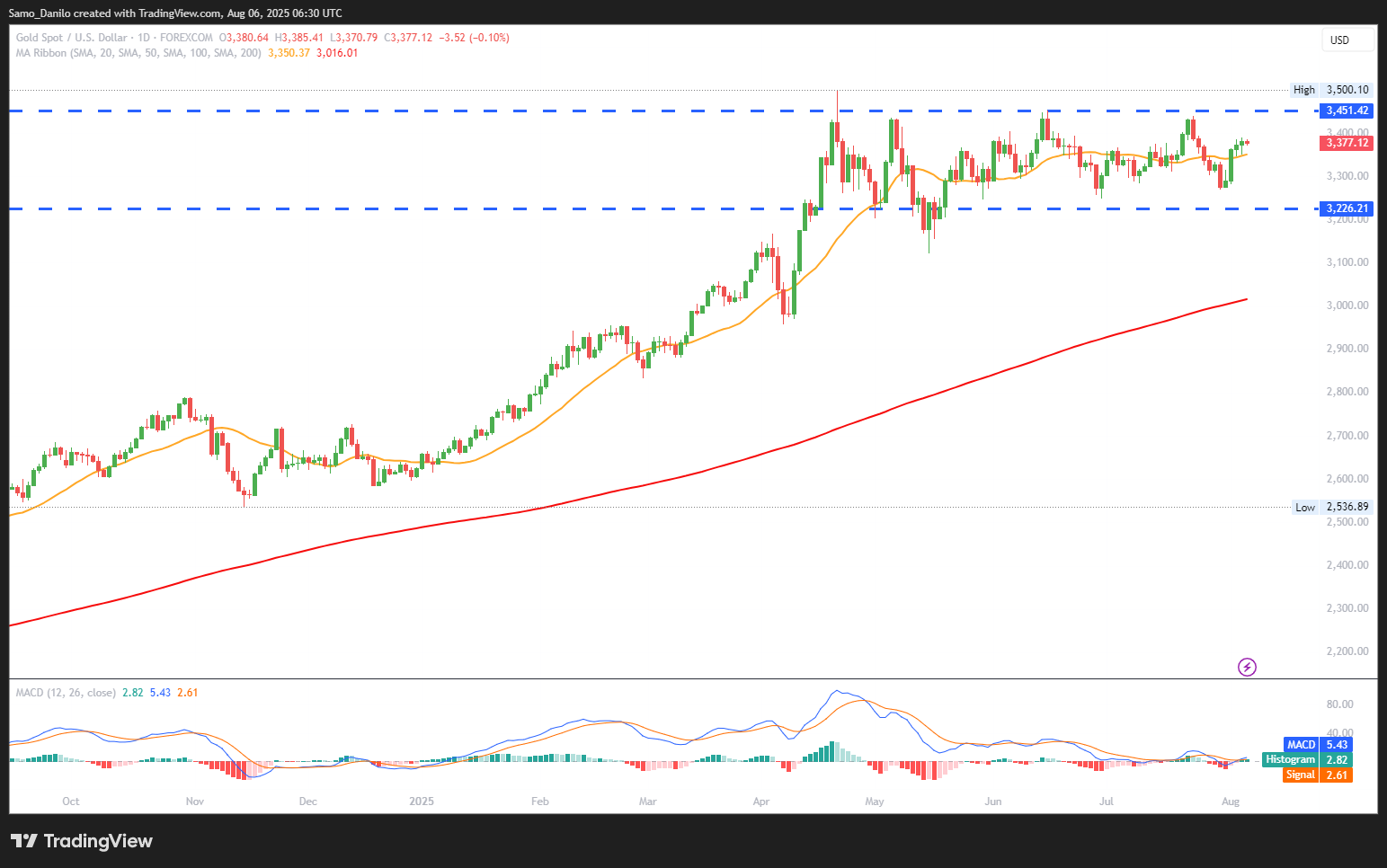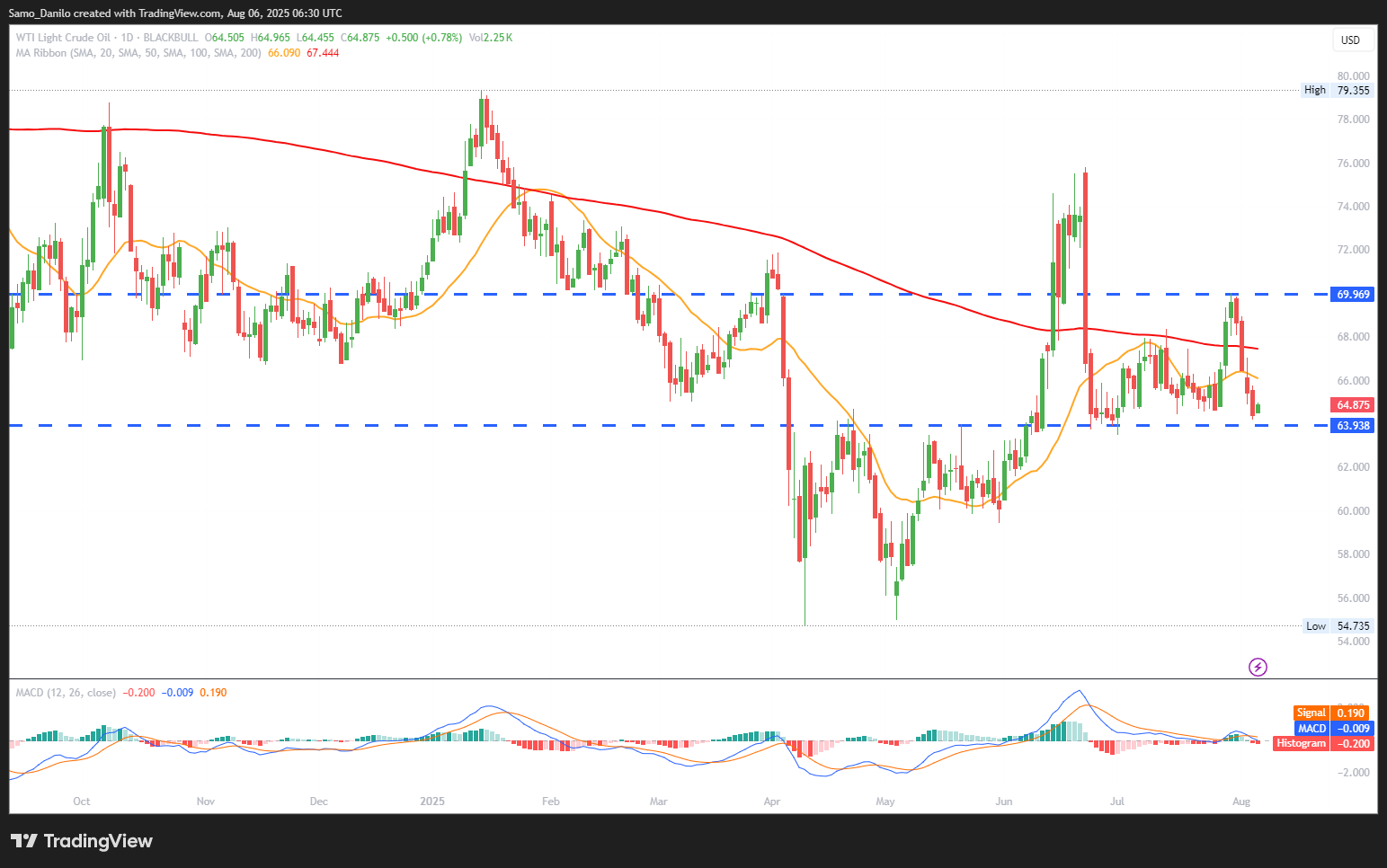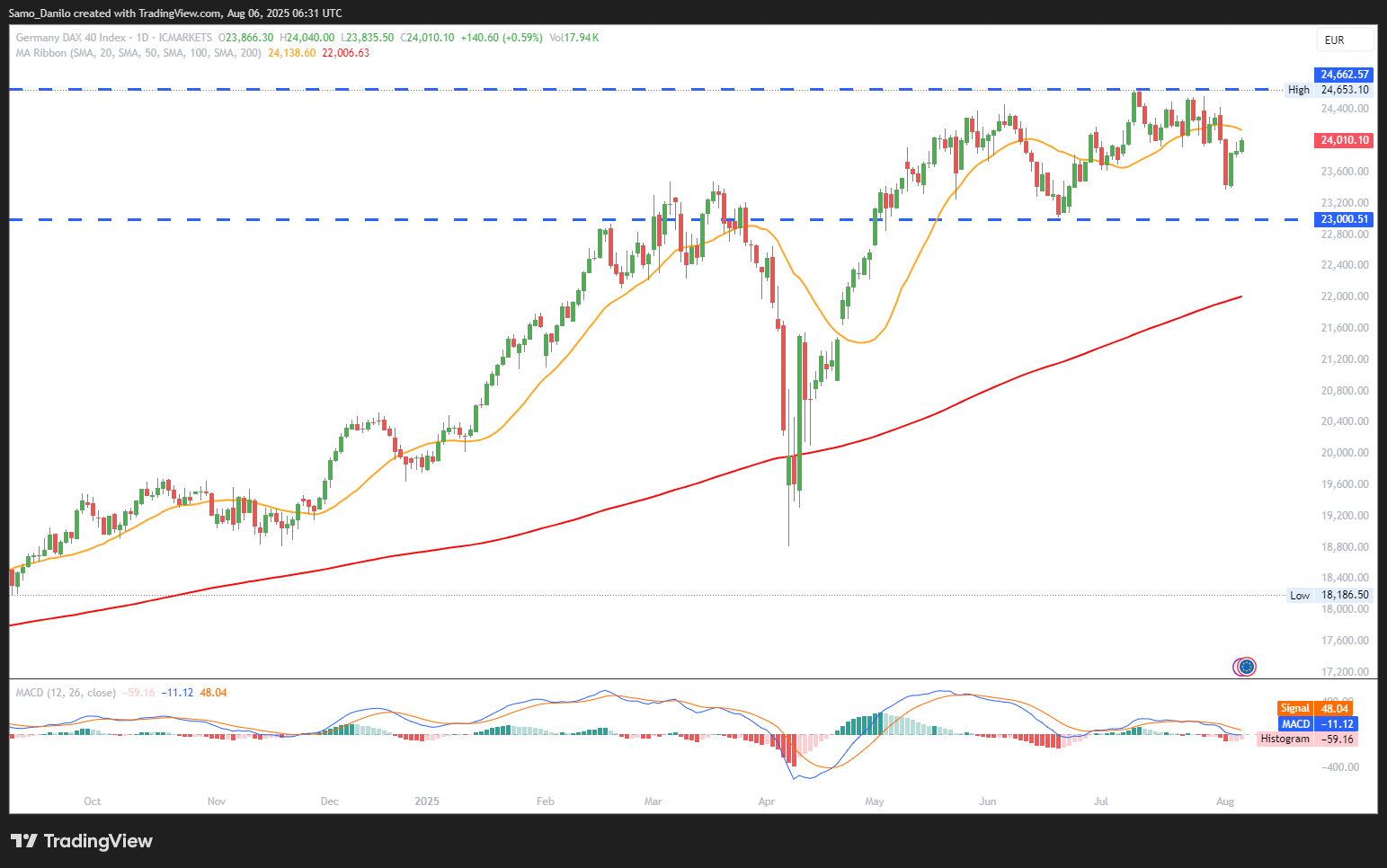EURUSD
- EUR/USD Price: The EUR/USD pair remains capped below the 1.1600 level, unable to capitalize on Monday’s modest gains. The US dollar extended its recent strength on Tuesday, supported by mixed yet overall resilient domestic economic data and uneven Treasury yield movements.
- US Services: Fresh data showed that the S&P Global Services PMI for July rose to 55.7, beating expectations and suggesting continued robustness in the US private sector. The Composite PMI also edged up to 55.1, further validating economic resilience despite broader concerns about growth deceleration.
- Eurozone PMI: In contrast, Eurozone PMI figures fell short of expectations, reinforcing concerns about the region's fragile recovery. The HCOB Composite PMI slipped to 50.9, just above contraction territory and lower than forecasted, adding pressure on the euro.
- Eurozone PPI: June’s Producer Price Index (PPI) rose 0.8% MoM, reversing the prior month’s decline and aligning with expectations. Annual PPI also beat forecasts at +0.6% YoY, offering a modest upside surprise amidst otherwise disappointing macro data from the bloc.
- Trade Framework: European Commission VP Maroš Šefčovič confirmed active coordination with US officials to advance the provisional trade deal. However, an EU insider warned that rejecting the agreement could prompt a new wave of mutual tariffs, introducing additional geopolitical risk to the pair.
Closing statement: EUR/USD remains under pressure amid diverging economic trajectories, with US data showing resilience while Eurozone indicators disappoint. As trade negotiations continue, the pair’s direction will likely depend on incoming macro data and whether diplomatic efforts can avert a tariff escalation.
GBPUSD
- GBP/USD Price: The GBP/USD pair trades flat around 1.3300 during Wednesday’s European session, reflecting cautious investor sentiment amid conflicting economic signals from both sides of the Atlantic.
- US Labor Market: The US employment index dropped to 46.4 in July, down from 47.2 in June, adding to last week’s weaker-than-expected job numbers. Combined with the recent manufacturing index slump to 43.4 — its lowest level since June 2020 — the data reinforces a growing sense of deterioration in the US labor market.
- UK Economic Activity: In contrast, UK PMI figures showed unexpected strength. The Composite PMI rose to 51.5, and the Services PMI climbed to 51.8, both exceeding forecasts. This suggests modest but stable expansion in the UK private sector, supporting the Pound despite looming monetary easing.
- BoE Rate Cut: Markets are widely pricing in a 25 bps rate cut by the Bank of England on Thursday, bringing the base rate to 4.00%. However, better-than-expected UK data may reduce the dovish interpretation of such a move, helping to keep the Pound relatively supported.
- Market Outlook: While the UK shows signs of resilience, the deteriorating US employment picture could shift market expectations toward more aggressive Fed cuts. Traders remain watchful ahead of both central bank decisions and further macro updates.
Closing statement: GBP/USD remains range-bound as the Pound finds support in upbeat UK data, while the US Dollar faces pressure from weakening labor signals. The upcoming BoE decision and any Fed commentary will likely dictate the pair’s next directional move.
XAUUSD
- XAU/USD Price: Gold (XAU/USD) continues its upward trajectory, posting gains for the fourth consecutive session on Tuesday after bouncing from key support around $3,350. It is now trading near $3,375, reflecting improved sentiment amid global market stabilization.
- Technical Indicators: The RSI holds at a neutral 51, signaling a lack of strong momentum in either direction. Meanwhile, the MACD remains below the zero line, though a flattening histogram suggests waning bearish pressure, hinting at a potential shift toward consolidation or further upside.
- Global Market: A broad recovery in global equities — with the MSCI World and Asia Pacific indices climbing and Japan’s Nikkei 225 up by 280 points — has improved overall risk sentiment, yet gold remains in demand, benefiting from renewed portfolio diversification.
- Gold Demand: According to ANZ, H1 2025 gold demand reached 2,384 tons, the strongest first-half total in over a decade. While jewelry consumption declined, strong retail and ETF investment flows more than compensated, underlining gold's appeal as a strategic hedge.
- Fed Commentary: Fed's Mary Daly signaled hesitation toward aggressive rate cuts, stating that the US labor market, though softening, is “not precariously weak.” Her measured stance on delaying further cuts adds a layer of uncertainty for bullion, which often reacts to Fed policy shifts.
Closing statement: Gold prices are gaining momentum on the back of technical stabilization and rising investment demand, even as global equities rebound. With Fed policy still uncertain and inflation dynamics in play, XAU/USD may remain supported above $3,350 in the near term.
CRUDE OIL
- Crude Oil Price: West Texas Intermediate (WTI) crude oil prices were volatile on Tuesday, fluctuating throughout the US session before closing lower. Traders are increasingly cautious as bullish demand catalysts remain limited, pressuring sentiment around near-term oil price strength.
- US Sanctions: The Trump administration is preparing new sanctions aimed at Russia’s “shadow fleet” — vessels used to circumvent existing energy export restrictions. While potentially tightening Russian supply channels, the market’s muted reaction suggests skepticism over enforcement or global supply impacts.
- India-Russia Oil: President Trump has threatened steep tariffs on all Indian imports if India continues energy dealings with Russia. India plays a critical role as both a major consumer and re-exporter of Russian crude, and further friction could disrupt secondary market flows, particularly to Europe.
- China's Investment: Smaller Chinese oil firms are ramping up investment in Iraq, with output expected to double to 500,000 barrels per day by 2030. Favorable terms and Iraq’s rich reserves make it a strategic focal point for China’s long-term energy security strategy, adding to non-OPEC+ growth outlooks.
- API Survey: A private inventory survey by the American Petroleum Institute (API) showed a crude draw of 0.6 million barrels, slightly supportive for prices. However, builds in distillates (+0.8mn bbls) and only a small gasoline draw (-0.4mn bbls) suggest mixed demand-side signals.
Closing statement: Crude oil markets remain in flux as geopolitical tensions rise but demand sentiment weakens. Supply-side risks from sanctions and shifting trade routes are being offset by rising non-OPEC+ capacity and uncertain consumption outlooks. WTI may remain range-bound unless demand data or geopolitical shocks shift the balance decisively.
DAX
- DAX Price: The DAX rose 0.37% on Tuesday, August 5, following a strong 1.42% rally on Monday, ending the session at 23,846. Sentiment remained cautiously optimistic as investors weighed improving economic signals against lingering industrial weakness.
- German PMI: Germany’s Composite PMI rose to 50.6, beating both forecasts and the previous reading, while Services PMI also improved slightly to 50.6. Though still near the stagnation line, the data reflects slow but positive momentum in Europe’s largest economy.
- Industrial Orders: June industrial orders in Germany fell by 1.0% month-over-month, sharply underperforming the expected 1.0% gain. The decline was driven by weakness in transport equipment demand, but economists note the result is largely accounted for in Q2 GDP projections, limiting its market impact.
- Auto Stocks: Automakers led the day’s gains, buoyed by a strong 11% YoY rebound in new car registrations in July. Volkswagen (+1.83%), Porsche (+1.49%), BMW (+1.40%), and Mercedes-Benz (+1.31%) all rallied, recovering from June’s sharp 13.8% drop in vehicle registrations.
- Earnings Season: Major DAX constituents — including Zalando, Vonovia, Siemens Energy, Fresenius, and Bayer — are set to report earnings on August 6. Their results and forward guidance are expected to heavily influence short-term DAX movement, especially amid concerns about tariff-driven margin pressure.
Closing statement: The DAX continues to climb, supported by resilient services activity and a rebound in automotive demand, but risks remain from weak manufacturing data and ongoing trade headwinds. Upcoming earnings releases will be critical in determining whether the rally holds or stalls in the near term.
